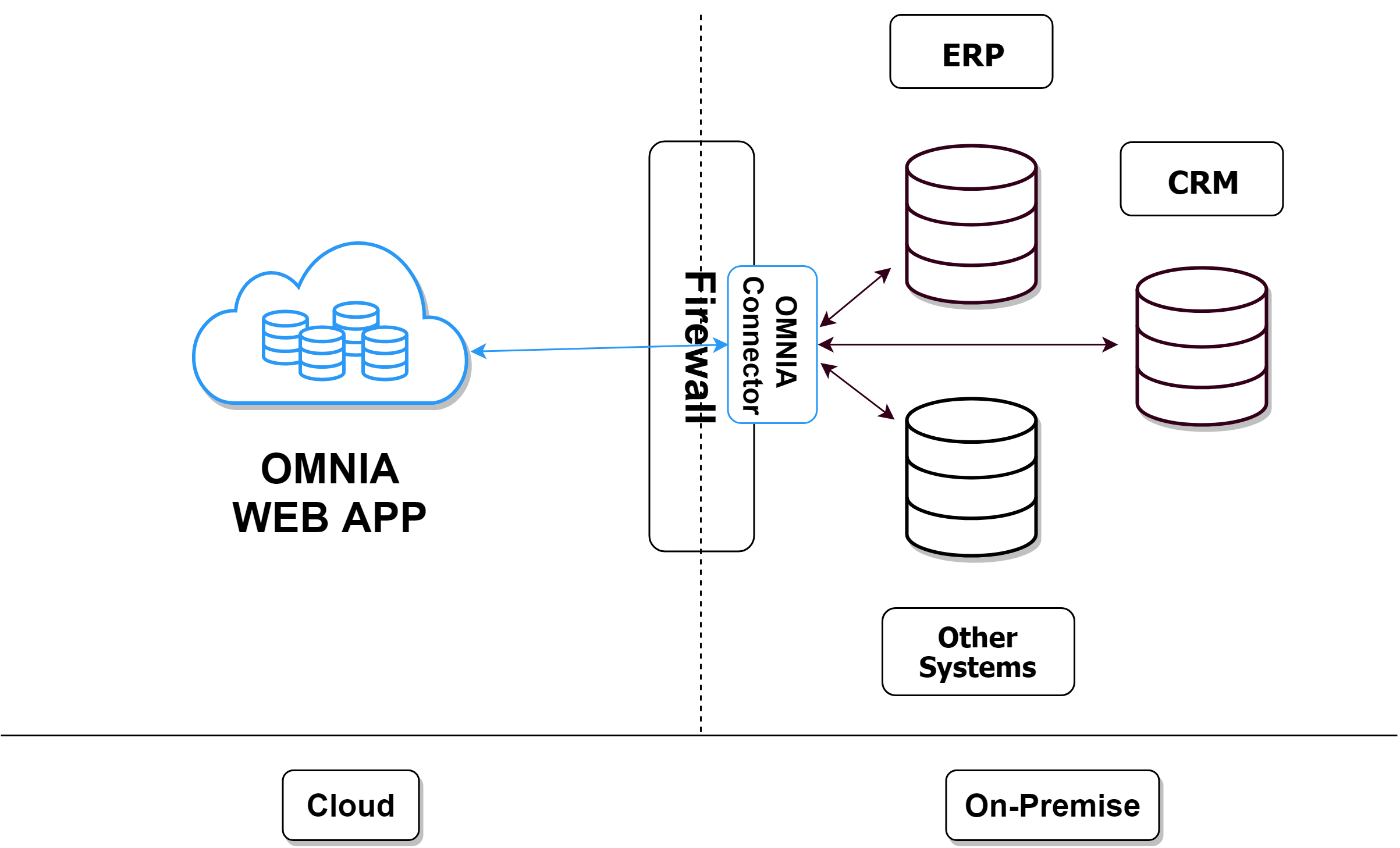Hybrid Solutions: Omnia Connector
Posted January 11th, 2023
“Hybrid cloud is a cloud computing environment that uses a mix of on-premises, private cloud and third-party, public cloud services with orchestration between the two platforms. By allowing workloads to move between private and public clouds as computing needs and costs change, hybrid cloud gives businesses greater flexibility and more data deployment options.” – searchcloudcomputing.techtarget.com
System connectivity is a core principle of our low-code platform. No matter the number of systems, or the environment they’re placed in (on-premise, cloud, etc), you can connect virtually any and all of them to our OMNIA Platform, making use of whatever functionalities they serve. This possibility opens up a huge range of modeling and development scenarios, that would otherwise be impossible, or extremely cost ineffective. In this post, we’ll detail how full system connectivity can be achieved with OMNIA.
One of the ways we allow for system connectivity is through APIs. In the case of existing APIs, the communication is standard and does not require any special details, however, the scenario is usually very different for on-premise system integration. There are several, cost ineffective, ways of solving this connectivity problem, and we believe we’ve found a very effective one. In order for our platform to be able to connect to on-premise systems, without compromising its security or its communication speed, we’ve developed a small piece of technology that we call the OMNIA Connector (see technical documentation).

There are three main advantages of our Connector that we want to highlight:
– Circumvents cross-boundary firewall issues entirely: because it is a service working on a network machine, the connector finds your application via HTTPS (not the other way around);
– Creates a fast and secure communication channel to your web application: the usage of web socket technology allows for a safe and very fast communication channel;
– Eliminates the need to expose entire systems to the web: by using our connector, the need for exposing your systems to the web (and the costs and risks associated with this) doesn’t exist.
OMNIA Development Example
Initial Status: Company A possesses an ERP system working on-premise, in an internal network, that contains databases such as Employee information, Cost Centers, and other standard ERP data.
Goal: Development of a Web Application that allows employees to interact and generate expense reports in the ERP, off-premise.
Common issues:
– Data duplication;
– ERP database read and write speed and frequency;
– No additional business logic;
Proposed Solution:

By making use of our Connector’s previously mentioned key advantages, this development example becomes a much simpler task with our low-code platform, by avoiding some of the most common issues altogether, by design.
This is just one of the many examples where our Connector makes an impact in development scenarios, we’ll certainly add more detailed examples in the near future.



